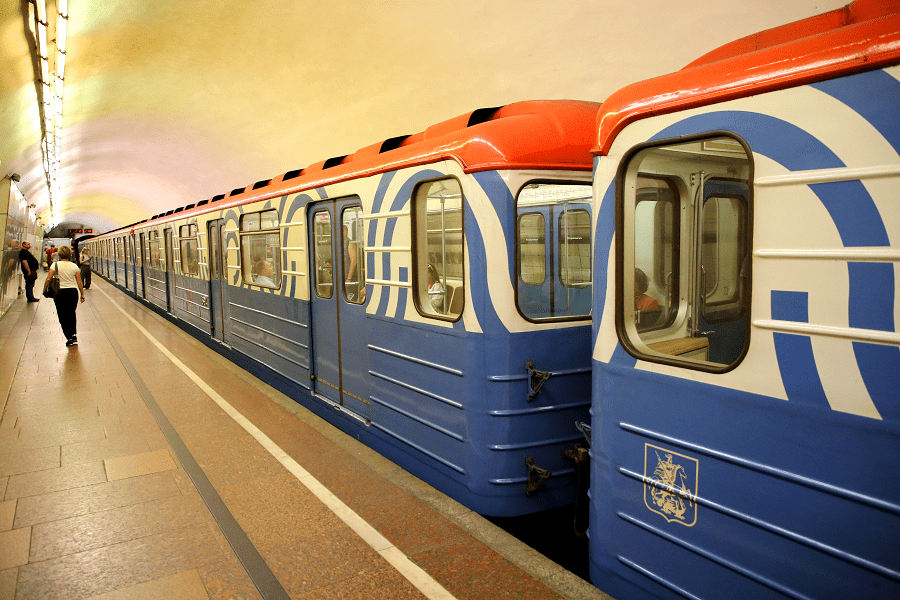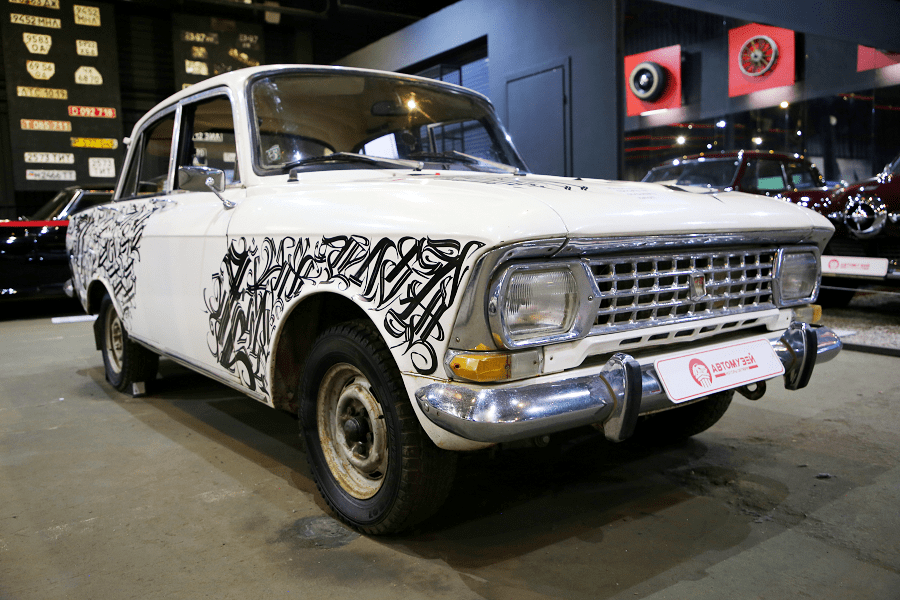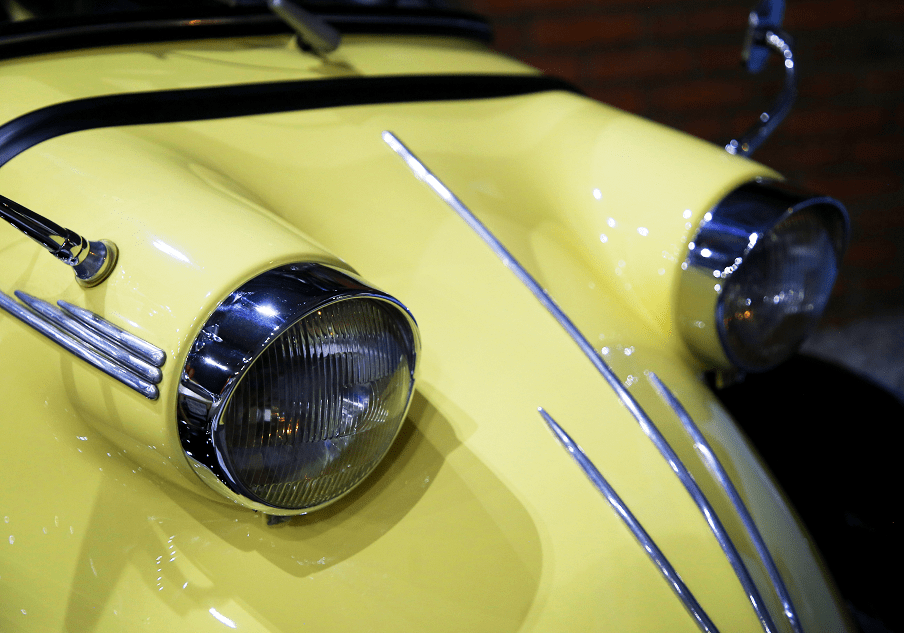81-717/714 “Номерной”
81-717/714 “Nomernoy” is a type of electric metro cars developed and produced by the Mytishchi Machine-Building Plant (from 1976 to 2021) and the Leningrad Carriage-Building Plant named after I. E. Egorova (from 1980 to 1995).
The cars 81-717 are head cars, and 81-714 are intermediate motor cars. In 2021, it became known about the testing of the trailed intermediate (non-motorized) car 81-714Uz, created on the basis of the 81-714 model at Tashkent Plant for the Construction and Repair of Passenger Cars (TVSRZ).
History
In the early 1970s, the plant had already developed a design for an intermediate car without a driver’s cabin (factory designation 81-714), which was structurally an improved version of the never-built Ezh2 type car. The plant also developed a design for the head car, which was given the factory designation 81-717. According to these projects, in the first half of 1976, the Mytishchi Machine-Building Plant produced 6 prototype cars.
The body of cars 81-717 and 81-714 was a modernized body of the latest modifications of type E cars, and therefore had the same basic dimensions. In terms of most of the equipment (motor-compressors, pneumatic equipment, batteries) and the design of the passenger compartments, the new cars were similar to the Ezh3 type cars. They also have a similar (with some exceptions) operating diagram of power electrical circuits (including the presence of rheostatic braking). External changes consisted primarily in the fact that the driver’s cabins, which existed in each car of all previous types, were removed from the intermediate cars, and the end transition door was removed from the front part of the head cars. Instead, a large windshield was installed on the front of the head cars, with a pair of smaller windows on both sides. At the same time, the driver’s seat, as well as the train controls, moved from the right side of the cab to the middle in front of the large wind window. To power the control circuits and charge the batteries, an electronic auxiliary power supply (BPSN) was used, and lighting in the interiors was carried out using fluorescent lamps. Due to the use of more powerful engines, an increase in the tare weight of cars, as well as an increase in the loading of the intermediate car, reinforced car bogies were pumped up with a torqueless suspension system for traction motors, an increased diameter of the axles of the wheel pairs and with a stiffer spring suspension.
Unlike previous models of metro cars, cars 81-717 and 81-714 did not receive a letter type designation, which was primarily due to the fact that they were created as test, temporary ones – to test part of the equipment that was later supposed to apply on “I” type cars. However, the delay in the development of the production of aluminum bodies and starting pulse regulators (thyristor-pulse control system), and even at a time when the Soviet subways were in dire need of new types of cars with a higher output power, led to the fact that these two were decided launch experimental models of subway cars into mass production. This was carried out in mid-1978 at the Mytishchi Machine-Building Plant. Their launch into mass production ultimately led to the model becoming the most widespread and longest-produced anywhere in the world. Since the capacity of one plant was not enough, from January 1980 at the Leningrad Carriage Plant named after. I. E. Egorova began production of cars 81-717, and from August of the same year, cars 81-714. At the same time, the Leningrad Carriage Works made a number of changes to the car drawings, which made it possible to use elements of the modernized body of the Em-508T, Em-502 and Em-501 cars for production. To speed up the production of subway cars, in mid-1980 the Kalinin Carriage Plant began producing bogies for cars 81-717, and from 1985 for cars 81-714.
Interior
Passenger seats in cars 81-717/714 are located longitudinally with their backs facing the walls of the car on either side of the central aisle. In the basic version, the seats have solid leather upholstery, and there are no partitions between the seats. When a train undergoes major repairs, the base of the seats is often changed to plastic with the installation of separate leatherette linings for each passenger; in some cases, metal partitions can be installed between the seats. The seats in the space between the doors accommodate 6 people, in the end part of the cars – 3 (when installing partitions, the number of seats in the ends can be reduced to 2). In total, the head cars 81-717 have 42 seats, and the intermediate cars 81-714 have 48 (in some versions – 40 and 44, respectively).
Modifications
- 81-717.1/714.1
After testing experimental cars of types 81-717 and 81-714 in 1976-1977, it was decided to launch their mass production. The management of the Prague Metro became interested in the new cars; the opening of a new line was planned for 1978. Therefore, in 1977, at the Mytishchi Machine-Building Plant, models of new metro cars for Prague were developed and went into mass production, designated 81-717.1 (head cars) and 81-714.1 (intermediate). By mid-1978, an order for the production of 68 cars 81-717.1/714.1 was completed, and only in June 1978 MMZ (Mytishchi Machine-Building Plant) began producing metro cars 81-717/714 for Moscow. Later, new deliveries of metro cars to Czechoslovakia followed; in total, 204 cars of type 81-717.1 and 303 cars of type 81-714.1 were produced in Mytishchi from 1978 to 1990.
From 2000 to 2011, the Prague Metro carried out a comprehensive modernization of cars 81-717.1/714.1 with the replacement of equipment, improvement of the exterior and interior, as well as changing the side numbers. The modernized cars were designated 81-71M.
- 81-717.2/714.2
It is a modification of the base model 81-717/714 for Hungary. Designed for reduced track width. Also, the head car has only two headlights. In 1979, delivery of cars 81-717.2 and 81-714.2 began for operation in the Budapest Metro. A few years later, on October 27, 1983, the 300th Soviet-made carriage was transferred to Budapest. In most cases, their coloring is monotonous; almost all Soviet carriages in Budapest are painted pale blue, with a straight black stripe running down the center. Only cars delivered to Hungary in the 1990s have a darker color. On early trains from cars 81-717.2, only two headlights were installed, which are similar to those in Mytishchi that were installed on Ев and Ечс cars.
In the spring of 1987, the chief engineer of the Budapest metro came to the Mytishchi Carriage Works to clarify the technical conditions. An agreement was concluded for the supply of 30 cars in 1988 – 10 head and 20 intermediate.
- 81-717.2K/714.2K
In August 2015, Metrovagonmash and the Hungarian company BKV, which manages the capital’s metro, entered into a contract for the overhaul and modernization of the outdated rolling stock of the Budapest metro, extending the service life of the cars by 30 years. The contract was concluded after Metrovagonmash OJSC was announced as the winner of the tender for these works on July 8, 2015. This tender, announced in November 2014, also included companies from France (Alstom Transport SA), Spain (Construcciones y Auxiliar de Ferrocarriles S.A. (CAF)), Czech Republic (Škoda Transportation a.s.), Estonia (Skinest Rail a.s.), as well as one company each from Romania and Hungary itself.
- 81-717.3/714.3
The opening of the first metro line in Warsaw (Poland) was planned for 1990, but was subsequently postponed to 1995. Therefore, the Warsaw Metro received its first subway cars long before the official opening. In 1989-1990, 10 cars 81-717.3/714.3 produced by the Mytishchi Machine-Building Plant arrived in the capital of Poland.
On November 30, 2023, all “Nomernoy” trains were out of use.
- 81-717.4/714.4
The first metro line of the capital of Bulgaria, Sofia, took about 20 years to build. Just as in the case of Warsaw, electric cars of types 81-717.4/714.4, intended for the Sofia metro, were manufactured at the Mytishchi Machine-Building Plant long before the opening of the “subway”. In total, MMZ produced 24 head and 24 intermediate cars for Sofia. They started working on the line only in January 1998.
At the moment, Sofia is the only city in the European Union and post-communist Europe where the original “Nomernoy” cars are in use.
- 81-717.5/714.5
In 1987, in order to further improve the reliability of multi-unit rolling stock, the Moscow Metro carried out operational tests of cars equipped with auxiliary power supplies (APSUs) with a voltage frequency of 150 Hz, electrical contact boxes for inter-car connections made on the basis of 7R-52 plug connectors. Accordingly, the modified 81-714 cars were designated 81-714.5. Cars 81-717.5 and 81-714.5 were equipped with highly reliable bogies, fireproof electrical equipment, and an alarm and fire extinguishing system was introduced.
The cars 81-717.5P/714.5P are operated in the St. Petersburg metro.
The last cars 81-717.5M/714.5M were produced in 2014 and delivered to Minsk.
These types of cars still remain the most popular not only in Russia, but also in Belarus, Ukraine and Azerbaijan.
- 81-717.6K/714.6K
In 2005, the project was proposed, and from 2006, work began on the capital modernization of existing “Nomernoy” before the modification, called 81-717.6K/714.6K. During the modernization of the trains, a new spacious half-plastic cabin of the driver with an emergency door in the frontal part and a new control panel, similar to the cabs of the Oka and Ladoga. A new facing of walls and seats was used in the passenger salon, as well as new lamps and round fans in the ceiling zone, and an air conditioner was installed in the driver’s cab.
In 2012, three four-four compositions 81-717.6/714.6 were purchased for the Nizhny Novgorod Metro to the opening of the Gorkovskaya station.
In 2013, wagons 81-717.6/714.6 were planned to be put in a Tashkent metro, but instead of them were purchased compositions of the «Moskva» type. In 2019, two four-four compositions 81-717.6/714.6 were purchased for the Yekaterinburg metro.
Operating countries
The 81-717/714 and its modifications are operated in 11 countries: Russia, Ukraine, Belarus, Azerbaijan, Armenia, Georgia, Uzbekistan, Bulgaria, Hungary, Poland and Czech Republic.
Named trains
- “Red Arrow”
The oldest operating named train in the Moscow metro. The train was launched by order of Russian Railways OJSC on the Sokolnicheskaya line on October 9, 2006 in honor of the 75th anniversary of the first Moscow-Leningrad branded train “Red Arrow”. The appearance of the train was developed in the special design bureau (SKB) of Metrovagonmash. The outside of the train is painted in red, the horizontal stripe is yellow instead of white, the roofs of the cars are silver, and on the doors instead of the usual design there is a stylized number 75. Inside there are yellow handrails, red seats, and materials about the history of the Red Arrow train are posted on the walls.
- “Oleg Tabakov”
The launch of the train took place on the night of September 12-13, 2019 at the Sukharevskaya station of the Kaluzhsko-Rizhskaya line. The train carriages provide information on the key moments of Oleg Tabakov’s creative path. Passengers could learn more about the artist’s family, the play “Sailor’s Silence”, from which the theater’s great life began, about the “Tabakerka” theater, as well as about Oleg Tabakov as a director and mentor, and about the award he established. The design also includes rare archival photographs and stills from films featuring the actor. At the end of December 2023 it will be transferred to the Lyublinsko-Dmitrovskaya line. Cars 81-717.5M/714.5M are used as rolling stock.
It was built in 2010 for the 75th anniversary of the Moscow metro and stylized for the first train of the Moscow metro, which consisted of a carriage of type A. Created by a special order at the manufacturer (Metrovagonmash), was made on the basis of model 81-717.5M/714.5M, however, however, however, however He received his digital designation-81-717.5A/714.5A.
Replacement
As the wear and aging of these trains began to be replaced with newer ones, but in different subways this happened differently, in the Moscow metro as a replacement first were the trains Rusich, later Oka, Moskva and Moskva-2020. In Saint Petersburg, 81-556 Neva trains are used as replacements, while in Novosibirsk, several of these trains are replaced with 81-540/541 trains, which are a further development of the 81-717. In Minsk, the 81-717 train started to run on new Stadler cars manufactured in the Fanipol suburb of Minsk.
General designer: A. Akimov (А. Акимов)
Assembly: Metrovagonmash (Mytishi, Moscow Oblast) and Vagonmash (St. Petersburg)
Years of production: 1976—2021
Production: 1042 units (total: 7409 wagons)
Length: 19,206 mm
Width: 2670 mm
Height: 3650 mm
Car material: stainless steel
Capacity: 330 passengers/wagon (48 seats/wagon)
Type of current and voltage: 750 V DC
Powerplant: 4× ДК-117Д
Output power: 4× 114 kW
Max speed: 90 km/h
Weight: 34 t

























